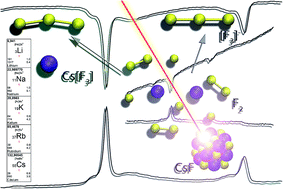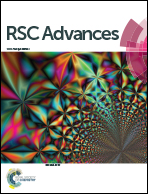Investigation of alkali metal polyfluorides by matrix-isolation spectroscopy†
Abstract
IR laser ablation was used for the systematic matrix-isolation investigation of reaction products of alkali metal fluorides and fluorine. New insights about periodic trends in the reaction behaviour of alkali metals and the formation as well as the photochemistry of alkali metal trifluorides are presented. New bands were found for the antisymmetric stretches of CsF3 and [F3]− in solid krypton and nitrogen, and for the combination bands (νas + νs) of CsF3 and [F3]− in solid krypton and argon.


 Please wait while we load your content...
Please wait while we load your content...